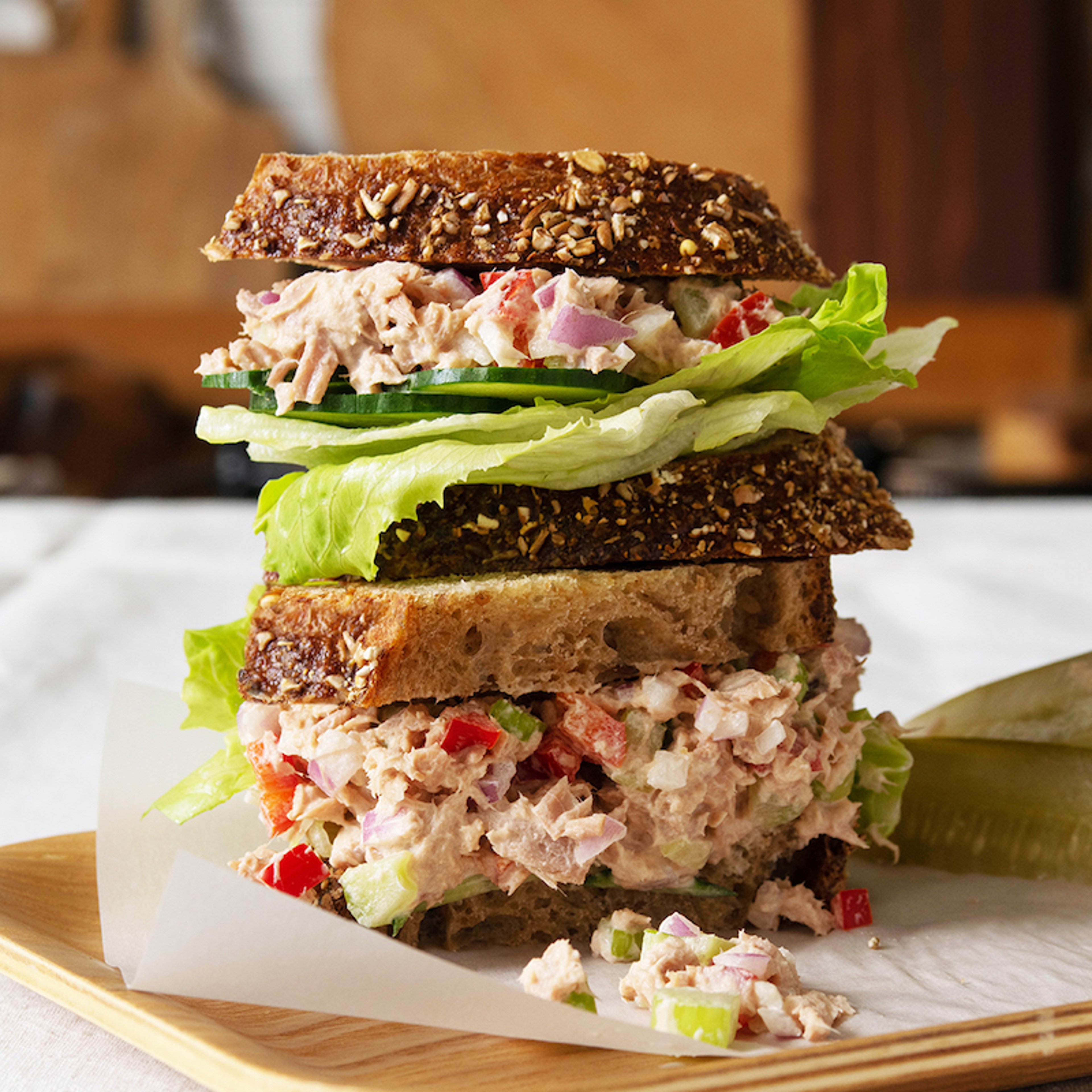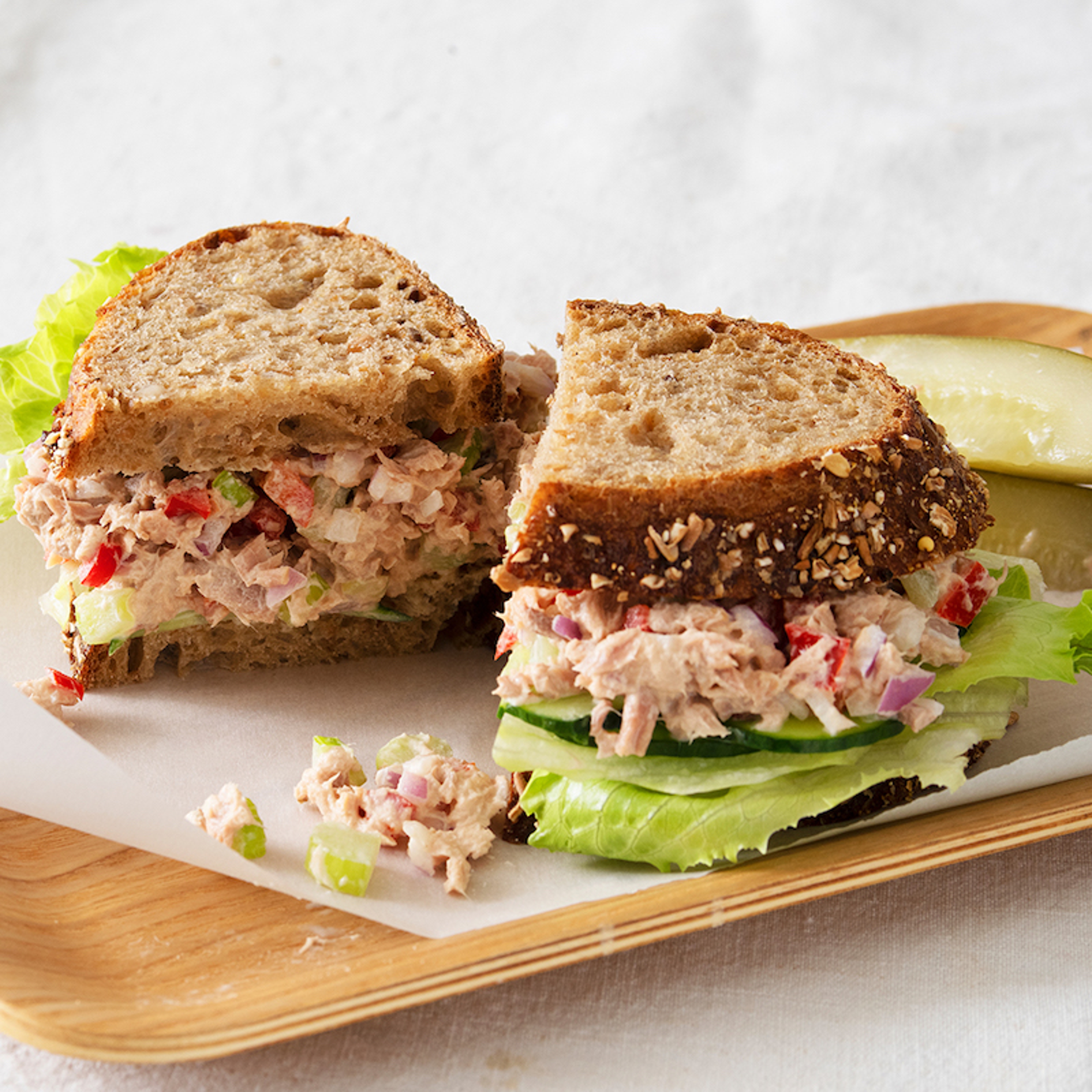The Fascinating History of the Tuna Fish Sandwich
The tuna fish sandwich in America dates back to the early 20th century. It was not an overnight sensation.
Jan 08, 2025
When Steve Cook, who co-runs a group of popular Philadelphia restaurants, makes tuna salad for his children, he adds canned sardines, mayonnaise, mustard, sweet pickle relish, red onion, celery, and herbs.
Wait.
Sardines?
They're fabulously good for you but are generally not on a child's wish list.
This wasn't always so.
Americans used to eat plenty of sardines and feed tuna to animals or use it as bait. Tuna's reputation changed in the early 1900s through marketing, the fishing expertise of Japanese immigrants, and the practicality of lunch-counter cooks.
It is a repeating pattern in food history: Overlooked, even despised foods, including lobster, evolve into favorites.
By the way, if you or your children wonder why we call proteins mixed with mayonnaise "salads," read on.
The "Tuna Salad" sandwich arrives
American 19th-century home cooks didn't waste food. After supper they saved any scraps of chicken, ham, or fish — typically salmon, white fish, or trout — then women and children ate them on lettuce the next day for lunch, mixed with homemade mayonnaise.
The lettuce is probably why we call these mixes "salad." There were other veggies too, though: Leftover celery, pickles, and olives were folded in as well.
Middle-class women, who had once been stuck at home, began shopping in department stores and attending lectures or visiting museums. Since men ate in saloons, where no respectable woman could show her face, ladies' lunch cafes sprouted up, offering the familiar mayonnaise-based mixes, usually featuring shellfish or fish.

When women began working in offices and stores, they had just a short midday break. To speed up table turnover and inspire take-out orders, city lunch counters spread the familiar mixes between two pieces of bread.
Canned tuna made the new lunch even easier, since cooks no longer needed to prepare a piece of fish.
How Americans embraced a new fish
Still, Americans needed to be sold on canned tuna. In the 1800s, American home cooks mostly were unfamiliar with tuna, fresh or canned. Italian immigrants were the exception, and they happily ate canned tuna imported from their home country.
However, the popularity of canned sardines had led to overfishing that threatened the U.S. fishing and sardine-packing industry.
In 1903, an executive at Southern California Fish Company, a Los Angeles sardine packer, got creative: He tried selling canned halibut and rockfish, but his most successful new product would be albacore tuna caught off the California coast and packed in local olive oil. (Bluefin tuna had too strong a taste for the American palate of the day.)

It took a marketing push for tuna to take off: The company offered free tastings, gave away tins, and emphasized that albacore was as dry and mild as chicken breast.
Some 15 years later, dozens of tuna canneries operated along the California coast. The tuna harvest had surged, as Japanese immigrants, led by Masaharu Kondo, founder of M.K. Fisheries in San Diego, began to fish using bamboo poles with a short line and barbless hook.
Kondo also introduced refrigeration ships from Japan, which allowed his company to fish in Mexican waters. Los Angeles's Terminal Island was renamed "Little Nippon" and had a “tuna street" as well as Buddhist temples and halls for judo and kendo to serve its Japanese workers.
Get creative with tuna salad
So, consider a nod to Japanese fishers: Try your tuna salad Japanese-style. It's now a common filling in Japanese rice balls and sandwiches made with a rice vinegar, egg-yolky mayonnaise called Kewpie (available online).

If you find it too rich, keep in mind that avocado or tahini makes an effective substitute for mayonnaise. On the other end of the richness spectrum, for a luxurious taste, use whipping cream, a popular preparation in Portugal.
There's a retro fad now for adding crushed potato chips for extra crunch and salt, or you can be a health nut and go for a sprinkling of roasted, crushed pumpkin seeds.
Traveling? To bypass weighty cans and the can opener, try tuna in pouches, plain, jalapeno, or smoked.
Many people say sweetness is necessary, so for a change from sweet relish, try cut-up tart apples, raisins, fresh or canned peaches, or cooked beets. Or just stick with tradition and pick a high-end pickle relish.
Whichever way you serve it, next time you grab an all-American tuna salad sandwich, remember that it's a product of women's industry plus entrepreneurial marketing and immigrant genius.
And how American is that?








